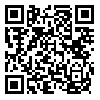Volume 75, Issue 5 (August 2017)
Tehran Univ Med J 2017, 75(5): 332-342 |
Back to browse issues page
Download citation:
BibTeX | RIS | EndNote | Medlars | ProCite | Reference Manager | RefWorks
Send citation to:



BibTeX | RIS | EndNote | Medlars | ProCite | Reference Manager | RefWorks
Send citation to:
Azimpour D, Tahan N, Poursaeed F, Dehghan Manshadi F, Ghasemi E. Extracorporeal shock wave therapy for the reduction of post stroke spasticity: review article and meta-analysis. Tehran Univ Med J 2017; 75 (5) :332-342
URL: http://tumj.tums.ac.ir/article-1-8213-en.html
URL: http://tumj.tums.ac.ir/article-1-8213-en.html
Davood Azimpour1 
 , Nahid Tahan *
, Nahid Tahan * 
 2, Fereshteh Poursaeed1
2, Fereshteh Poursaeed1 
 , Farideh Dehghan Manshadi1
, Farideh Dehghan Manshadi1 
 , Erfan Ghasemi3
, Erfan Ghasemi3 


 , Nahid Tahan *
, Nahid Tahan * 
 2, Fereshteh Poursaeed1
2, Fereshteh Poursaeed1 
 , Farideh Dehghan Manshadi1
, Farideh Dehghan Manshadi1 
 , Erfan Ghasemi3
, Erfan Ghasemi3 

1- Department of Physiotherapy, School of Rehabilitation, Shahid Beheshti University of Medical Sciences, Tehran, Iran.
2- Department of Physiotherapy, School of Rehabilitation, Shahid Beheshti University of Medical Sciences, Tehran, Iran. ,nahidta2431@gmail.com
3- Department of Biostatistics, Shahid Beheshti University of Medical Sciences, Tehran, Iran.
2- Department of Physiotherapy, School of Rehabilitation, Shahid Beheshti University of Medical Sciences, Tehran, Iran. ,
3- Department of Biostatistics, Shahid Beheshti University of Medical Sciences, Tehran, Iran.
Abstract: (4076 Views)
Background: Spasticity is a clinical deficit of upper motor neurons lesions that presented immediately or at delayed times after lesions and occurs in about 38% of stroke patients. Extracorporeal shock wave therapy (ESWT) has been recently reported as a safe and effective method for reducing spasticity in stroke patients. In the present study, we sought to investigate the impact of the ESWT on post stroke spasticity using a meta-analysis method.
Methods: All primary reports of spasticity indexed in PubMed, MEDLINE, Science Direct, Scopus and search engine of Google Scholar from January 2000 to December 2016 were searched. The following terms were used as keywords: Spasticity, muscle hypertonicity, ESWT, stroke and hemiplegia. Any report was included if it met the following criteria: involving clinical trials, full-version availability, and being written in english. Two reviewers selected articles independently and reviewed the studies considering quality and eligibility, and then they extracted general information on objectives, design, participants, and outcomes. The methodologic quality of each study was assessed using the Pedro Scale. In the statistical analyses, we considered two outcomes; Modified Ashworth scale (MAS) grade and passive rang of movement (PROM). The meta-analysis was done using random effect model in Stata, version 11 (Stata Corp., TX, USA).
Methods: All primary reports of spasticity indexed in PubMed, MEDLINE, Science Direct, Scopus and search engine of Google Scholar from January 2000 to December 2016 were searched. The following terms were used as keywords: Spasticity, muscle hypertonicity, ESWT, stroke and hemiplegia. Any report was included if it met the following criteria: involving clinical trials, full-version availability, and being written in english. Two reviewers selected articles independently and reviewed the studies considering quality and eligibility, and then they extracted general information on objectives, design, participants, and outcomes. The methodologic quality of each study was assessed using the Pedro Scale. In the statistical analyses, we considered two outcomes; Modified Ashworth scale (MAS) grade and passive rang of movement (PROM). The meta-analysis was done using random effect model in Stata, version 11 (Stata Corp., TX, USA).
| Results: Eleven studies within a total of 261 patients were included in this review. In seven studies the shock waves were applied to the upper limb muscles, and in four other studies, the effects of ESWT on the spasticity of the lower limb muscles were assessed. Immediately after applying the ESW, MAS grade was significantly decreased in comparison to the baseline values. (Standardized mean difference [SMD], -1.62; 95% confidence interval [CI], -2.2 to -1.04). The PROM was significantly increased immediately after ESWT in comparison to the baseline values (SMD, 3.23; CI 95%, 1.35 to 5.12). Conclusion: The results of this study showed that ESWT can immediately improve the spasticity and increased PROM, but it seems that the mechanism of action of shock waves on spasticity is still unclear. Further clinical trial studies with higher methodological quality should be recommended. |
Type of Study: Review Article |
Send email to the article author
| Rights and permissions | |
 |
This work is licensed under a Creative Commons Attribution-NonCommercial 4.0 International License. |



